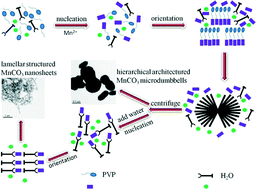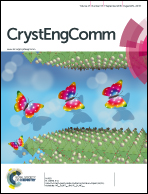Hierarchical architectured MnCO3 microdumbbells: facile synthesis and enhanced performance for lithium ion batteries
Abstract
Hierarchical architectured MnCO3 microdumbbells and lamellar structured MnCO3 nanosheets were selectively synthesized by a facile reflux route. Hierarchical architectured MnCO3 microdumbbells (approximately 0.5–1.5 μm in length and 0.3–0.9 μm in width) were composed of nanoparticles, while the lamellar structured MnCO3 nanosheets had uniform length of approximately 400 nm. Both structures were employed as anode active materials in lithium ion batteries. Experimental results showed that the hierarchical architectured MnCO3 microdumbbells exhibited superior electrochemical performances compared with the lamellar structured MnCO3 nanosheets. At a current rate of 0.5 C, the reversible capacity of the hierarchical architectured MnCO3 microdumbbell electrode after 100 cycles was 775 mA h g−1, while the lamellar structured MnCO3 nanosheets electrode was only 50 mA h g−1 after 100 cycles. The superior electrochemical behavior of hierarchical architectured MnCO3 microdumbbell materials could be ascribed to the unique micro-nano assembly structure, simultaneously cushioning the volume change, maintaining the electrode integrity, and offering a short diffusion distance.



 Please wait while we load your content...
Please wait while we load your content...